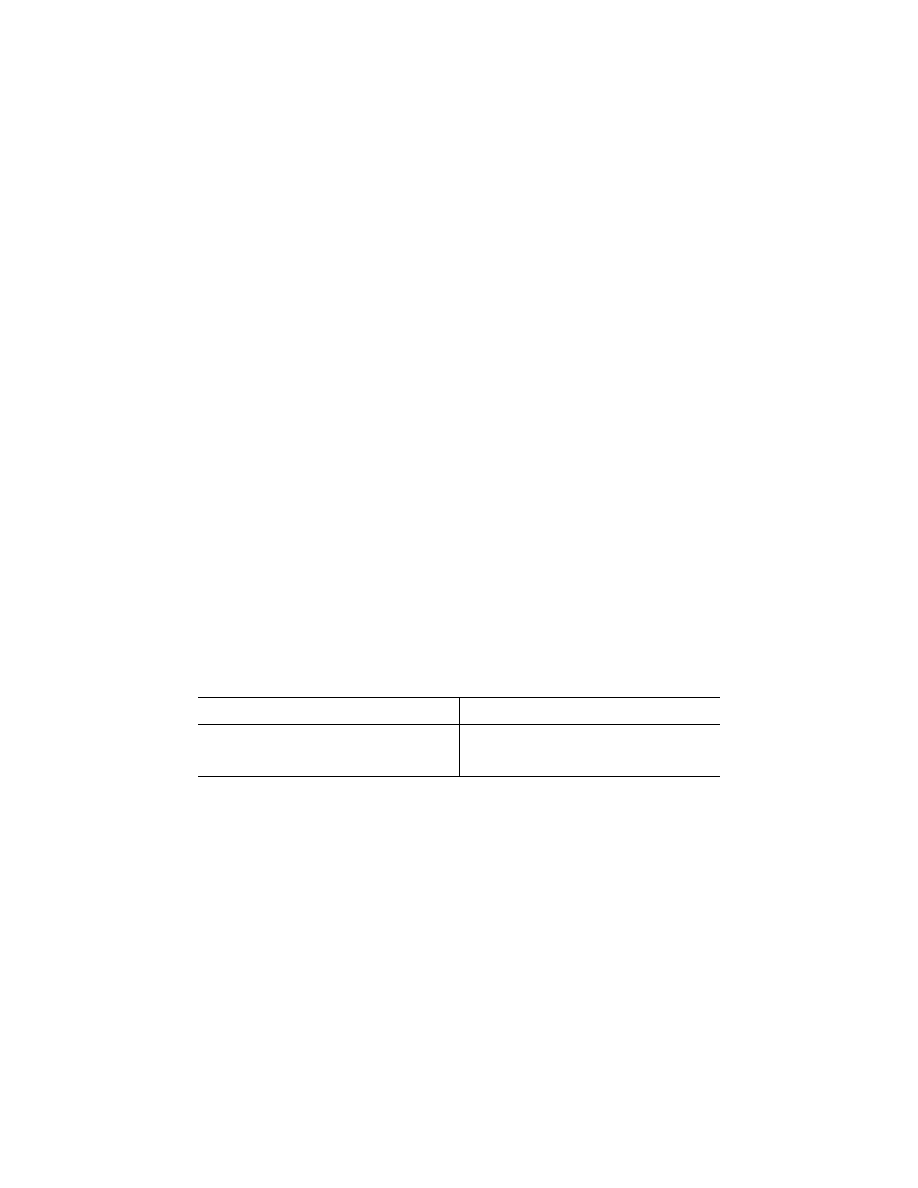
133
Federal Aviation Administration, DOT
§ 21.3
(1)
Airworthiness approval means a
document, issued by the FAA for an
aircraft, aircraft engine, propeller, or
article, which certifies that the air-
craft, aircraft engine, propeller, or ar-
ticle conforms to its approved design
and is in a condition for safe operation,
unless otherwise specified;
(2)
Article means a material, part,
component, process, or appliance;
(3)
Commercial part means an article
that is listed on an FAA-approved
Commercial Parts List included in a
design approval holder’s Instructions
for Continued Airworthiness required
by § 21.50;
(4)
Design approval means a type cer-
tificate (including amended and supple-
mental type certificates) or the ap-
proved design under a PMA, TSO au-
thorization, letter of TSO design ap-
proval, or other approved design;
(5)
Interface component means an arti-
cle that serves as a functional interface
between an aircraft and an aircraft en-
gine, an aircraft engine and a propeller,
or an aircraft and a propeller. An inter-
face component is designated by the
holder of the type certificate or the
supplemental type certificate who con-
trols the approved design data for that
article;
(6)
Product means an aircraft, aircraft
engine, or propeller;
(7)
Production approval means a docu-
ment issued by the FAA to a person
that allows the production of a product
or article in accordance with its ap-
proved design and approved quality
system, and can take the form of a pro-
duction certificate, a PMA, or a TSO
authorization;
(8)
State of Design means the country
or jurisdiction having regulatory au-
thority over the organization respon-
sible for the design and continued air-
worthiness of a civil aeronautical prod-
uct or article;
(9)
State of Manufacture means the
country or jurisdiction having regu-
latory authority over the organization
responsible for the production and air-
worthiness of a civil aeronautical prod-
uct or article.
(10)
Supplier means a person at any
tier in the supply chain who provides a
product, article, or service that is used
or consumed in the design or manufac-
ture of, or installed on, a product or ar-
ticle.
[Doc. No. FAA–2006–25877, Amdt. 21–92, 74 FR
53384, Oct. 16, 2009; Doc. No. FAA–2013–0933,
Amdt. 21–98, 80 FR 59031, Oct. 1, 2015; Amdt.
21–98A, 80 FR 59031, Dec. 17, 2015; Docket
FAA–2015–0150, Amdt. 21–99, 81 FR 42207, June
28, 2016; Docket FAA–2018–1087, Amdt. 21–105,
86 FR 4381, Jan. 15, 2021]
§ 21.2
Falsification of applications, re-
ports, or records.
(a) A person may not make or cause
to be made—
(1) Any fraudulent, intentionally
false, or misleading statement on any
application for a certificate or ap-
proval under this part;
(2) Any fraudulent, intentionally
false, or misleading statement in any
record or report that is kept, made, or
used to show compliance with any re-
quirement of this part;
(3) Any reproduction for a fraudulent
purpose of any certificate or approval
issued under this part.
(4) Any alteration of any certificate
or approval issued under this part.
(b) The commission by any person of
an act prohibited under paragraph (a)
of this section is a basis for—
(1) Denying issuance of any certifi-
cate or approval under this part; and
(2) Suspending or revoking any cer-
tificate or approval issued under this
part and held by that person.
[Doc. No. 23345, 57 FR 41367, Sept. 9, 1992, as
amended by Amdt. 21–92, 74 FR 53384, Oct. 16,
2009; Amdt. 21–92A, 75 FR 9095, Mar. 1, 2010]
§ 21.3
Reporting of failures, malfunc-
tions, and defects.
(a) The holder of a type certificate
(including amended or supplemental
type certificates), a PMA, or a TSO au-
thorization, or the licensee of a type
certificate must report any failure,
malfunction, or defect in any product
or article manufactured by it that it
determines has resulted in any of the
occurrences listed in paragraph (c) of
this section.
(b) The holder of a type certificate
(including amended or supplemental
type certificates), a PMA, or a TSO au-
thorization, or the licensee of a type
certificate must report any defect in
any product or article manufactured by
it that has left its quality system and
VerDate Sep<11>2014
09:06 Jun 28, 2024
Jkt 262046
PO 00000
Frm 00143
Fmt 8010
Sfmt 8002
Y:\SGML\262046.XXX
262046
jspears on DSK121TN23PROD with CFR

134
14 CFR Ch. I (1–1–24 Edition)
§ 21.3
that it determines could result in any
of the occurrences listed in paragraph
(c) of this section.
(c) The following occurrences must
be reported as provided in paragraphs
(a) and (b) of this section:
(1) Fires caused by a system or equip-
ment failure, malfunction, or defect.
(2) An engine exhaust system failure,
malfunction, or defect which causes
damage to the engine, adjacent aircraft
structure, equipment, or components.
(3) The accumulation or circulation
of toxic or noxious gases in the crew
compartment or passenger cabin.
(4) A malfunction, failure, or defect
of a propeller control system.
(5) A propeller or rotorcraft hub or
blade structural failure.
(6) Flammable fluid leakage in areas
where an ignition source normally ex-
ists.
(7) A brake system failure caused by
structural or material failure during
operation.
(8) A significant aircraft primary
structural defect or failure caused by
any autogenous condition (fatigue, un-
derstrength, corrosion, etc.).
(9) Any abnormal vibration or buf-
feting caused by a structural or system
malfunction, defect, or failure.
(10) An engine failure.
(11) Any structural or flight control
system malfunction, defect, or failure
which causes an interference with nor-
mal control of the aircraft for which
derogates the flying qualities.
(12) A complete loss of more than one
electrical power generating system or
hydraulic power system during a given
operation of the aircraft.
(13) A failure or malfunction of more
than one attitude, airspeed, or altitude
instrument during a given operation of
the aircraft.
(d) The requirements of paragraph (a)
of this section do not apply to—
(1) Failures, malfunctions, or defects
that the holder of a type certificate
(including amended or supplemental
type certificates), PMA, TSO author-
ization, or the licensee of a type cer-
tificate determines—
(i) Were caused by improper mainte-
nance or use;
(ii) Were reported to the FAA by an-
other person under this chapter; or
(iii) Were reported under the accident
reporting provisions of 49 CFR part 830
of the regulations of the National
Transportation Safety Board.
(2) Failures, malfunctions, or defects
in products or articles—
(i) Manufactured by a foreign manu-
facturer under a U.S. type certificate
issued under § 21.29 or under an ap-
proval issued under § 21.621; or
(ii) Exported to the United States
under § 21.502.
(e) Each report required by this sec-
tion—
(1) Must be made to the FAA within
24 hours after it has determined that
the failure, malfunction, or defect re-
quired to be reported has occurred.
However, a report that is due on a Sat-
urday or a Sunday may be delivered on
the following Monday and one that is
due on a holiday may be delivered on
the next workday;
(2) Must be transmitted in a manner
and form acceptable to the FAA and by
the most expeditious method available;
and
(3) Must include as much of the fol-
lowing information as is available and
applicable:
(i) The applicable product and article
identification information required by
part 45 of this chapter;
(ii) Identification of the system in-
volved; and
(iii) Nature of the failure, malfunc-
tion, or defect.
(f) If an accident investigation or
service difficulty report shows that a
product or article manufactured under
this part is unsafe because of a manu-
facturing or design data defect, the
holder of the production approval for
that product or article must, upon re-
quest of the FAA, report to the FAA
the results of its investigation and any
action taken or proposed by the holder
of that production approval to correct
that defect. If action is required to cor-
rect the defect in an existing product
VerDate Sep<11>2014
09:06 Jun 28, 2024
Jkt 262046
PO 00000
Frm 00144
Fmt 8010
Sfmt 8002
Y:\SGML\262046.XXX
262046
jspears on DSK121TN23PROD with CFR

135
Federal Aviation Administration, DOT
§ 21.4
or article, the holder of that produc-
tion approval must send the data nec-
essary for issuing an appropriate air-
worthiness directive to the FAA.
[Amdt. 21–36, 35 FR 18187, Nov. 28, 1970, as
amended by Amdt. 21–37, 35 FR 18450, Dec. 4,
1970; Amdt. 21–50, 45 FR 38346, June 9, 1980;
Amdt. 21–67, 54 FR 39291, Sept. 25, 1989; Amdt.
21–92, 74 FR 53385, Oct. 16, 2009; Doc. No.
FAA–2018–0119, Amdt. 21–101, 83 FR 9169, Mar.
5, 2018]
§ 21.4
ETOPS reporting requirements.
(a)
Early ETOPS: reporting, tracking,
and resolving problems. The holder of a
type certificate for an airplane-engine
combination approved using the Early
ETOPS method specified in part 25, Ap-
pendix K, of this chapter must use a
system for reporting, tracking, and re-
solving each problem resulting in one
of the occurrences specified in para-
graph (a)(6) of this section.
(1) The system must identify how the
type certificate holder will promptly
identify problems, report them to the
responsible Aircraft Certification Serv-
ice office, and propose a solution to the
FAA to resolve each problem. A pro-
posed solution must consist of—
(i) A change in the airplane or engine
type design;
(ii) A change in a manufacturing
process;
(iii) A change in an operating or
maintenance procedure; or
(iv) Any other solution acceptable to
the FAA.
(2) For an airplane with more than
two engines, the system must be in
place for the first 250,000 world fleet en-
gine-hours for the approved airplane-
engine combination.
(3) For two-engine airplanes, the sys-
tem must be in place for the first
250,000 world fleet engine-hours for the
approved airplane-engine combination
and after that until—
(i) The world fleet 12-month rolling
average IFSD rate is at or below the
rate required by paragraph (b)(2) of this
section; and
(ii) The FAA determines that the
rate is stable.
(4) For an airplane-engine combina-
tion that is a derivative of an airplane-
engine combination previously ap-
proved for ETOPS, the system need
only address those problems specified
in the following table, provided the
type certificate holder obtains prior
authorization from the FAA:
If the change does not require a new airplane type certificate
and . . .
Then the Problem Tracking and Resolution System must ad-
dress . . .
(i) Requires a new engine type certificate ..................................
All problems applicable to the new engine installation, and for
the remainder of the airplane, problems in changed systems
only.
(ii) Does not require a new engine type certificate .....................
Problems in changed systems only.
(5) The type certificate holder must
identify the sources and content of
data that it will use for its system. The
data must be adequate to evaluate the
specific cause of any in-service problem
reportable under this section or § 21.3(c)
that could affect the safety of ETOPS.
(6) In implementing this system, the
type certificate holder must report the
following occurrences:
(i) IFSDs, except planned IFSDs per-
formed for flight training.
(ii) For two-engine airplanes, IFSD
rates.
(iii) Inability to control an engine or
obtain desired thrust or power.
(iv) Precautionary thrust or power
reductions.
(v) Degraded ability to start an en-
gine in flight.
(vi) Inadvertent fuel loss or unavail-
ability, or uncorrectable fuel imbal-
ance in flight.
(vii) Turn backs or diversions for fail-
ures, malfunctions, or defects associ-
ated with an ETOPS group 1 signifi-
cant system.
(viii) Loss of any power source for an
ETOPS group 1 significant system, in-
cluding any power source designed to
provide backup power for that system.
(ix) Any event that would jeopardize
the safe flight and landing of the air-
plane on an ETOPS flight.
(x) Any unscheduled engine removal
for a condition that could result in one
VerDate Sep<11>2014
09:06 Jun 28, 2024
Jkt 262046
PO 00000
Frm 00145
Fmt 8010
Sfmt 8002
Y:\SGML\262046.XXX
262046
jspears on DSK121TN23PROD with CFR


